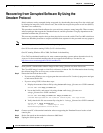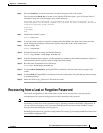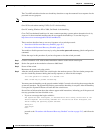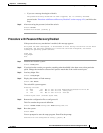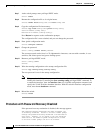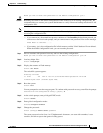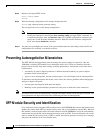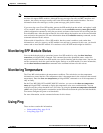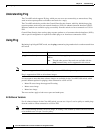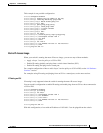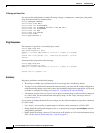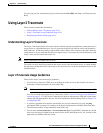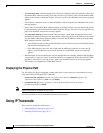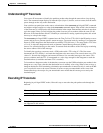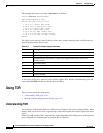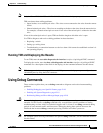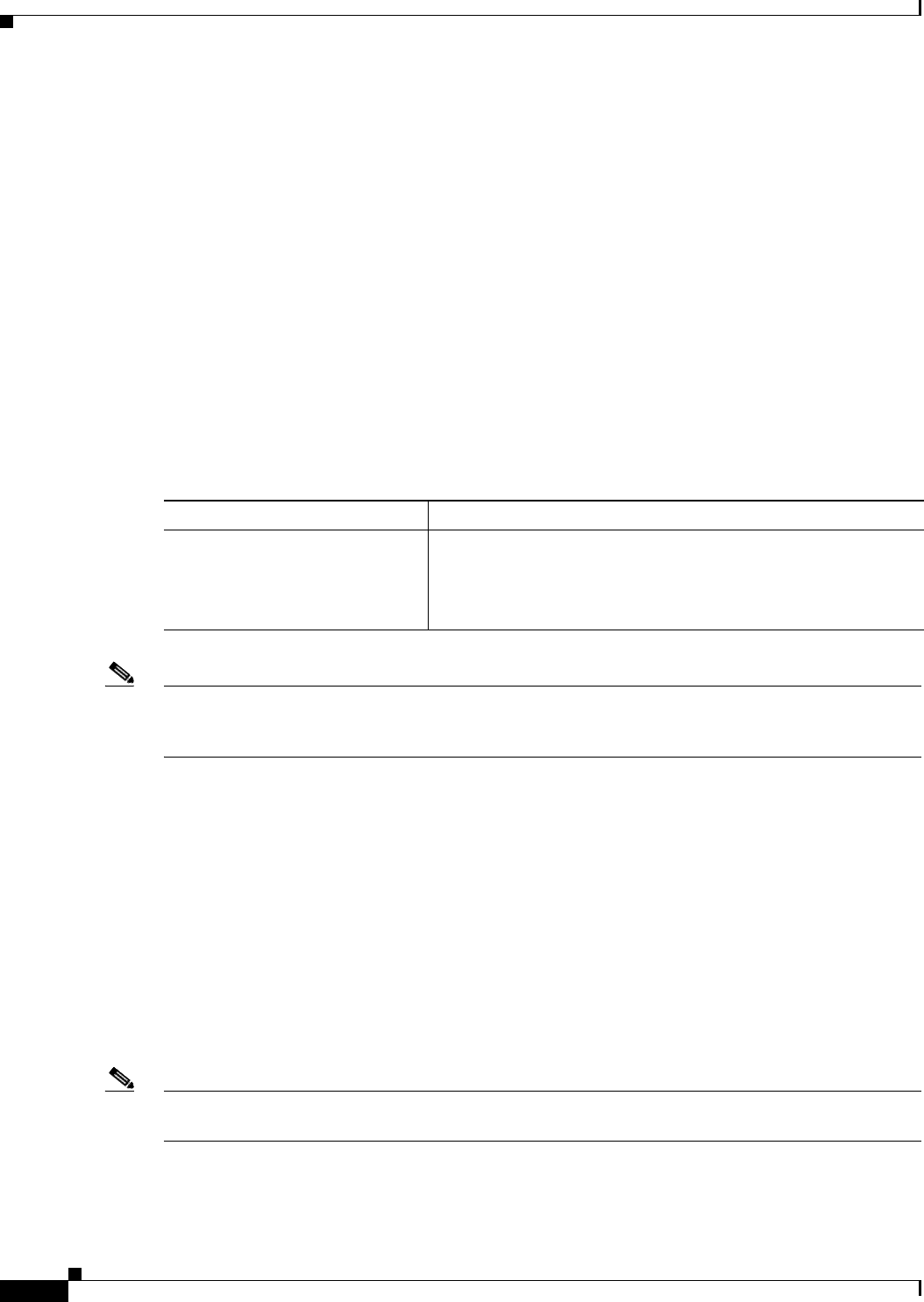
42-10
Cisco ME 3400 Ethernet Access Switch Software Configuration Guide
OL-9639-06
Chapter 42 Troubleshooting
Using Ping
Understanding Ping
The Cisco ME switch supports IP ping, which you can use to test connectivity to remote hosts. Ping
sends an echo request packet to an address and waits for a reply.
The Cisco ME switch also provides the Control Plane Security feature, which by default drops ping
response packets received on user network interfaces (UNIs) or enhanced network interfaces (ENIs).
However, methods are available to ping successfully from the switch to a host connected to a UNI or
ENI.
Control Plane Security does not drop ping response packets to or from network node interfaces (NNIs),
and no special configuration is required to enable pings to or from hosts connected to NNIs.
Using Ping
Beginning in privileged EXEC mode, use the ping command to ping another device on the network from
the switch:
Note Ping is not supported on a UNI or ENI configured as an IEEE 802.1Q tunnel port.
Ping is supported on NNIs on all software images.
It is important to note that three software images are available for the Cisco ME 3400 switch, which
provide different options for pinging a host connected to a UNI or ENI:
• Metro IP access image that supports IP routing
• Metro access image
• Metro base image
The next sections apply to both access ports and trunk ports.
All Software Versions
For all software images for the Cisco ME switch, you can use a Layer 3 service policy to enable pings
from the switch to a host connected to a UNI or ENI.
Note For a switch running the metro IP access image, IP routing is not enabled by default and does not have
to be enabled to use a Layer 3 service policy.
Command Purpose
ping [host | address] Ping a remote host by supplying the hostname or IP network
address.
Note Though other protocol keywords are available with the
ping command, they are not supported in this release.



